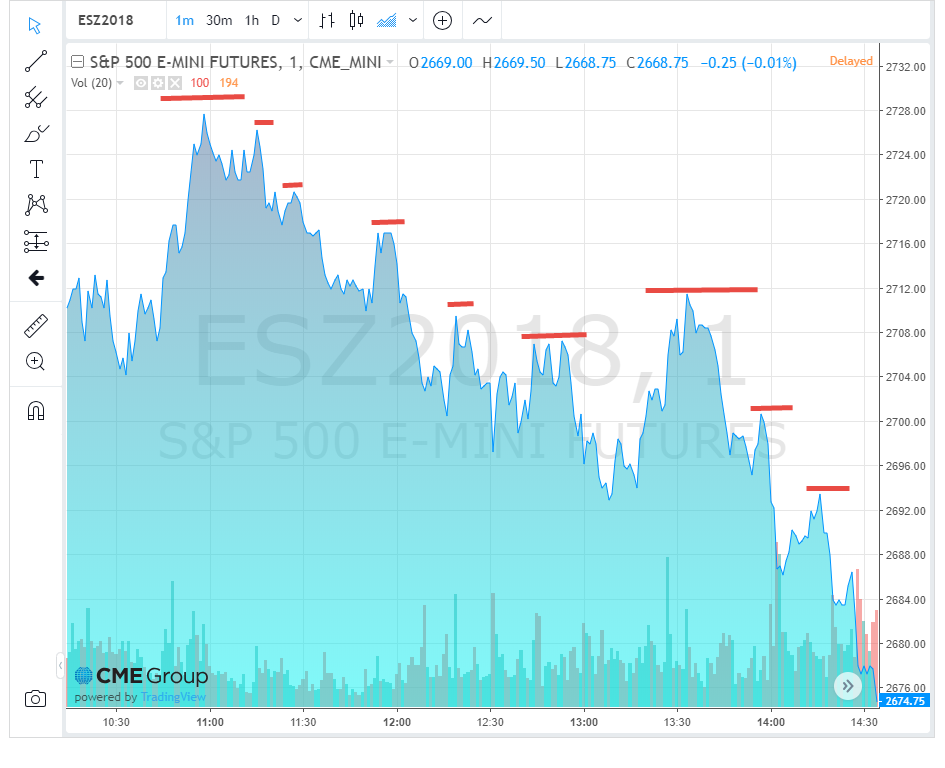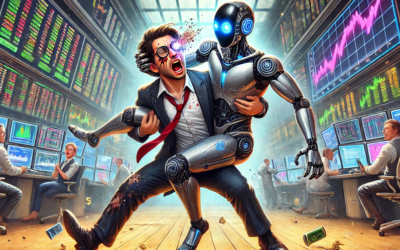Volatility – Moving Your Stops is Not Always The Answer
It’s time to discuss the volatility…
Lot’s of traders are suffering at the moment and it is NOT just retail traders. There’s quite a few professional traders licking their wounds right now. Yes, that’s right – word from the prop managers I know is this current volatility is causing issues for many of their traders too.
Now – before I continue – if you are new to order flow, there’s something at the end of this article, just for you. This is a TERRIBLE time to be learning to trade order flow. We have a live event next week, where we’ll show you some drills to help.
For those that have been around Jigsaw and the recent webinars we’ve held, we have been talking about this a lot. That you can have a nice setup, that works well, then the market will come along and throw it off track. That’s the point at which a lot of traders give up on that setup because it ‘stops working’. This is one of the reasons you can spend many years looking for the perfect setup because you aren’t mentally prepared for this and you don’t know how to react when it happens.
The volatility we are experiencing right now is an extreme example of the market switching gears. When I’ve previously said “the market will change pace and impact your setups” – this is NOT what I was referring too – this is much more severe. Still, it’s not the end of the world. It’s basically an over-reaction to what’s really a small increase to historically low interest rates. People are now saying things like “if interest rates increase again, the market will go crazy”. Maybe, maybe not. Interest rates are not high, we’ve had much higher rates with markets being quite stable. Forget the hyperbole, this is temporary and it’ll calm down regardless of what happens with interest rates.
The big question of course is “how do I adjust?”…
There’s a defensive and offensive part to this question. One trader I talk to frequently is trading a short-term method. His stops are tight and the market moves 7-10 ticks on a winning trade. Right now, the market is moving 20, 30 or more ticks but he’s still getting stopped out at 3 ticks. This is where the ‘offensive’ part comes in, with more volatility, comes more opportunity. If your goal is simply to avoid losses trading this volatility, to take the same profits despite the extra risk, then you are almost guaranteed to simply increase your losses.
So is the answer to widen your stops and targets? Well, it’s worth consideration but the devil is in the details. How do you actually calculate the new stop value? Just make it bigger? If so, by how much? In my experience, when traders widen their stops at times like this, they still get stopped out, it just loses them more money. So here’s how I recommend approaching it:
Step Back – Take a step back. Stop trading. When the market changes pace, your method needs to change too. Maybe it won’t work at all. There may be more setups or fewer setups. There may be good setups and bad setups (even within the same set of trading rules). You can learn by losing but this is not good for your mental health. The best thing to do is observe, figure out how to play it and then put that plan into action.
Think Laterally – If widening stops is the only solution to your problem to an increase in volatility and you have no ‘scientific’/reliable method of widening them – you are probably still going to get stopped out. So far, I have seen no evidence that widening your stops in this market will reduce your losses. On the contrary, I know a number of traders that tried it and the results were disastrous.

One of the issues for a lot of retail traders is the concept of putting stops somewhere visually pleasing. Like the red lines in the above image. Traders recognize that an adjustment is needed but they don’t seem willing or open to the idea that “stops above the last swing” might not be applicable in these market conditions. That it’s not the size of the stop that is the issue, it’s the very concept of placing it above a swing high.
Instead of widening your stops, you have no stop at all?
Here’s where lateral thinking comes in. If your setup is now followed by exponentially larger moves, then one strategy is to wait for the move to start. You are paying for confirmation in ticks. You get in later but you get into a market in a confirmed move. You can get in later because the resulting moves are much larger. Sometimes, the move will halt and that is when you exit. You don’t have to wait for the market to move against you, you get in and you’ll either get some breathing room in the trade OR you’ll scratch out.
What you won’t do is watch the market move against you. Of course, a safety stop doesn’t hurt but the key is a change in approach. You are NOT changing the setup, the trigger for engaging in the market is the same but the entry is later and with momentum.
You might find other ways to adjust your method. This is just one suggestion and hopefully, one that will get you thinking about other ways to exploit the fact that there is both more risk and more opportunity, right now. One that is more flexible than wider stops.
Reading Order Flow Right Now..
This one is for all traders but especially for those new to Order Flow. Reading order flow IS problematic in markets like these but on Monday, we are going to do a live session, focused on the US indices to help you look at some of the key things to read in this volatile market. In particular, the pauses in the action that occur that give us opportunity to enter.
This is part of Octobers “Group Therapy” session and we’ll be looking at some trader development issues in the first half before we look at the live markets. The session starts at 12pm Eastern on 30th October. Click here to register. Unlike most Group Therapy – this is open to all.
Simplify Your Trading
Take a look into the decision making process of professional traders with this video training series that helps you make smarter trading decisions.




0 Comments